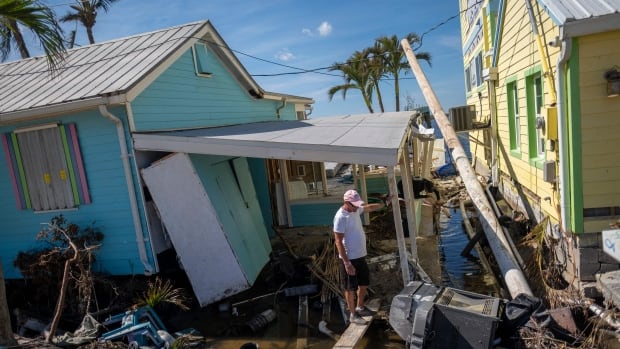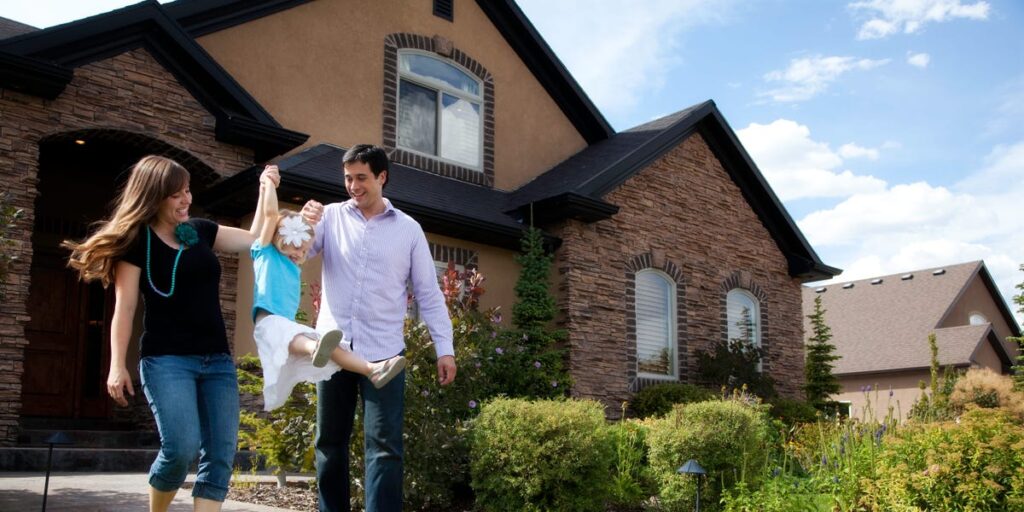Hurricane Ian another blow for Florida’s buckling home insurance sector | CBC News

For many Floridians whose homes were destroyed, they now face the arduous task of rebuilding after Hurricane Ian without insurance or paying even steeper prices in an insurance market that was already struggling.
Even before Ian, Florida’s home insurance market was dealing with billions of dollars in losses from a string of natural disasters, rampant litigation and increasing fraud. The difficult environment has put many insurers out of business and caused others to raise their prices or tighten their restrictions, making it harder for Floridians to obtain insurance.
Those who do manage to insure their homes are seeing costs increase exponentially. Even before Hurricane Ian, the annual cost of an average Florida homeowners insurance policy was expected to reach $4,231 in 2022, nearly three times the U.S. average of $1,544.
“They are paying more for less coverage,” said Florida’s insurance consumer advocate Tasha Carter. “It puts consumers in dire circumstances.”
The costs have become so high that some homeowners have forgone coverage altogether. About 12 per cent of Florida homeowners don’t have property insurance — more than double the U.S. average of five per cent — according to the Insurance Information Institute, a research organization funded by the insurance industry.
It’s a fraught issue even as the state perennially ranks at the top of net migration in the U.S. Florida’s population grew to slightly less than 21.8 million in the 12 months ending July 1, 2021, according to the U.S. Census Bureau, the state adding over 211,000 more residents from a year earlier.
A flood of lawsuits
Florida’s insurance industry has seen two straight years of net underwriting losses exceeding $1 billion each year. A string of property insurers, including six so far this year, have become insolvent, while others are leaving the state.
As of July, 27 Florida insurers were on a state watchlist for their precarious financial situation. Mark Friedlander, the head of communications for the Insurance Information Institute, expects Hurricane Ian will cause at least some of those to tip into insolvency.
The insurance industry says overzealous litigation is partly to blame. Loopholes in Florida law, including fee multipliers that allow attorneys to collect higher fees for property insurance cases, have made Florida an excessively litigious state, Friedlander said.
Florida currently averages about 100,000 lawsuits over homeowners’ insurance claims per year, he said. That compares to just 3,600 in California, which has almost double Florida’s population.
The state accounts for just nine per cent of all homeowners insurance claims in the U.S., but a whopping 76 per cent of the country’s homeowners’ insurance claims lawsuits, according to the Florida Office of Insurance Regulation,
“Plaintiff attorneys in Florida have historically found ways of circumventing any efforts at reining in legal system abuses, making it likely that ongoing reforms will be needed to further stabilize the insurance marketplace,” said Logan McFaddin of the American Property Casualty Insurance Association.
Rampant fraud — particularly among roofing contractors — has also added to costs. Regulators say it’s common for contractors to go door-to-door offering to cover homeowners’ insurance deductible in exchange for submitting a full roof replacement claim to their property insurance company, claiming damage from storms.
Things have become so bad with insurance that Florida Gov. Ron DeSantis called a special session in May to address the issues. New laws limit the rates attorneys can charge for some property insurance claims and require insurers to insure homes with older roofs — something they had stopped doing because of rising fraud claims.
State insurer sees signups soar
The legislation also includes a $150-million US fund that will offer grants to homeowners to make improvements to protect against hurricanes. But that program has yet to be launched, and experts say it will take years to reverse the damage to Florida’s insurance market.
In the meantime, the crisis has pushed more homeowners to Citizens Property Insurance Corp., the state-backed insurer that sells home insurance for those who can’t get coverage through private insurers.
Citizens had more than one million active policies as of Sept. 23, before Ian hit, according to Michael Peltier, a spokesperson at Citizens. In 2019, that number was roughly 420,000. He said the company had been writing 8,000 to 9,000 new policies per week, double compared with a few years ago.
Even if they have homeowners’ insurance, many Floridians could still be facing financial ruin because of flooding. Flood damage isn’t typically covered by homeowners’ insurance but can be costly; Florida’s Division of Emergency Management says 2.5 centimetres of floodwater can do $25,000 in damage.
Friedlander said just 18 per cent of Florida homeowners carry flood insurance, either through the federal government’s National Flood Insurance Program or private insurers. That total obscures some great variations — the rate in coastal areas is around 50 per cent, while inland — where Ian’s flood waters continued to rise even after the storm had passed — it’s closer to five per cent.
This content was originally published here.




Responses